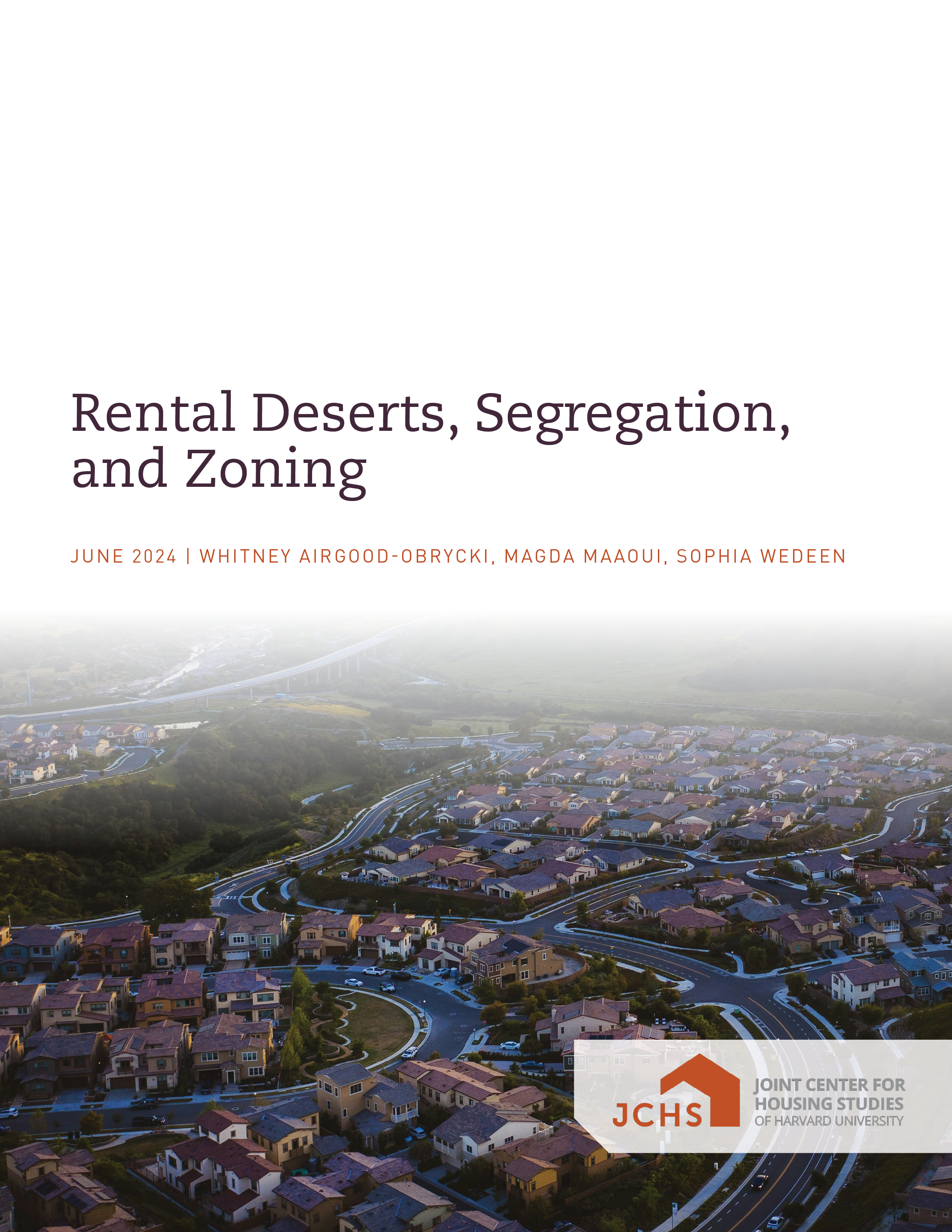Rental Deserts, Segregation, and Zoning
Restrictive zoning and NIMBY attitudes have left nearly a third of neighborhoods across the country with few options for renters. The concentration of rental housing in some neighborhoods and the exclusion of rental options from others reinforces enduring patterns of residential segregation by race and income. Indeed, neighborhoods with a lower share of rental housing are disproportionately suburban and higher-income, with a higher share of white households, as compared to neighborhoods that have a high share of rental options.
In this paper, we use the concept of rental deserts to highlight places that have few rental opportunities for households and define these as neighborhoods where rental units make up less than 20 percent of the housing stock. We examine the characteristics of rental desert neighborhoods, arguing that uneven geographies of rental opportunities bolster patterns of socioeconomic and racial segregation because renters are disproportionately lower-income and people of color. We investigate variations in the spatial distribution of rental deserts across and within metropolitan areas as well as resulting segregation by mapping divergence indices that measure the unevenness of rental housing within metropolitan areas.
We find an association between rental deserts and a lack of neighborhood-level racial and economic diversity. We also find that restrictive zoning and land use regimes are associated with the presence of rental deserts. We conclude by recommending zoning changes that pave the way for multifamily housing and rental options in exclusionary communities, to confront inequities in where people can live. While zoning changes have the potential to increase housing options for renters, creating socioeconomically integrated, mixed-tenure communities will also require building more homes at lower price points, increasing access to homeownership, and expanding housing subsidies.

